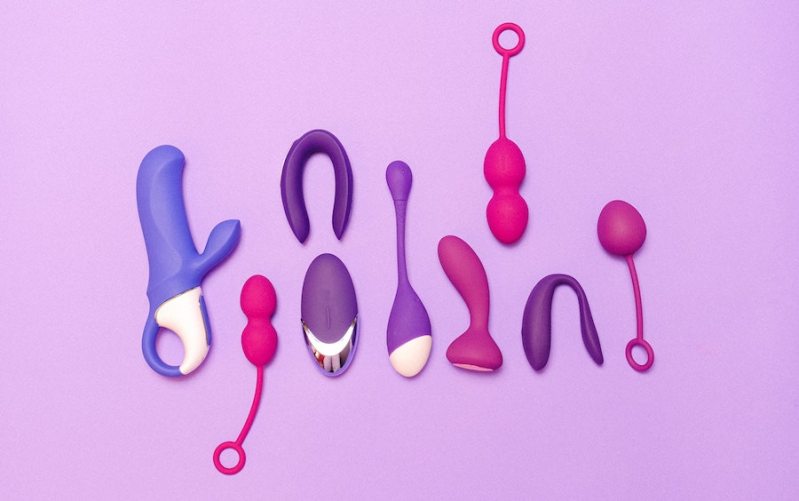Vibrators seem to be everywhere these days. Far from the shame-filled status they once had, they make frequent appearances—in both private and public.
Countless folks of all genders keep ’em stored in their nightstand, “naughty” drawer, or dungeon (for the really adventurous). They’ve started popping up on the Instagram feeds of influencers. One vibrator even had a breakout role in the most recent season of The Bachelor. And it wasn’t even close to the most controversial or shocking occurrence of the season.
Suffice it to say, vibrators are here and here to stay. And there’s no reason to be coy about it.
But even with all the popularity of vibrators, there’s a whole lot that many of us still just don’t know about them. Read on for some important details and fun facts about these beloved sex toys.
The History of Vibrators

There are conflicting views about the origins and history of vibrators. Unsurprisingly, a variety of urban myths have arisen from their history. And it’s a little unclear which are 100% true and which are slightly or completely fabricated.
Some have claimed that vibrators were used by physicians for decades—if not centuries—to “treat” women with hysteria. Others claim that vibrators were first used for hysteria in 19th-century Britain. While still others have said that they mainly emerged as vibrating, massaging devices used to treat a variety of mental and physical ailments.
Regardless of which origin story is true, it took decades for vibrators to be widely advertised as sexual devices.
‘Sex and the City’ Increased Vibrator Usage

Okay, okay—this one we can’t say for sure. But apparently, following some appearances of vibrators in episodes of the beloved and widely watched television show Sex and the City, vibrator sales surged. We’ll probably never know how much this was causation versus coincidental correlation—but we can reasonably guess that Carrie, Charlotte, Samantha, and Miranda did indeed play a role.
There’s a Story Behind ‘Rabbit’ Vibrators

Speaking of Sex and the City, remember the episode when Charlotte gets a “rabbit” vibrator and suddenly refuses to leave her house? Well, as you may also remember, a “rabbit” is a vibrator that distinctly resembles the animal of its name—bunny ears and all.
There’s actually a reason why we now have zoologically shaped sex toys. Back in the 80s, Japan had pretty strict laws around “obscenity.” So, producing sex toys that looked, seemed, or were sold as such was pretty much out of the question. In order to get around this, sex toy company Vibratex decided to create vibrators in bright colors that were shaped like animals. And so the rabbit vibrator was born.
In 1998, Charlotte discovered rabbit vibrators in that classic episode—and, well, the rest is history.
There Are Too Many Kinds to Count

There are so many different types and varieties and uses for vibrators that, in all likelihood, none of us are familiar with them all.
There are, as mentioned, rabbit vibrators. There are the classic, ol’ reliable massage wands. There are bullet vibrators, without all the bells and whistles, which are basically just for vibrating and just for the clitoris (though feel free to get more creative, of course). There are wearable vibrators, which are especially fun for partner pleasure, so that you can multitask while doing the deed. There are g-spot-centric vibrators, which are all about getting those deep, penetrative vibrations.
But the list, frankly, goes on—and could probably never fit in just one article. So research, experiment, and explore away!
Some Vibrators Simulate Oral Sex

Since we’re on the topic of different kinds of vibrators, did you know that some are designed to simulate oral sex?
Many of these vibrators use pulsing or air technology to simulate the sucking or other sensations of oral sex. Some folks are already going crazy for these devices—and they’re being sold more and more commonly.
Safe to say that these vibrating toys will probably never be quite as delightful as the real thing. But it also never hurts to try it out, eh?
The Vibration Frequencies Matter

Take a moment and think back to your high school physics class. Maybe you recall what you learned about how the frequencies of vibrations and oscillations work. Even if you don’t remember, one of the basic principles is fairly basic to grasp: the lower the frequency, the farther it travels; the higher the frequency, the less distance it travels.
Well, believe it or not, the same thing actually applies to vibrators. This doesn’t mean that one vibrator’s frequency is better than another’s. It just means that you should be aware of your personal preferences when shopping and selecting sex toys to use.
Lower frequency vibrators travel further into the body, penetrating more of the tissues. They’ve got more of the deep, rumbly feel. Higher frequency vibrators, on the other hand, stay more on the surface. Those are more of the buzzy, higher pitched vibrators that are extremely popular.
There’s no right or wrong here: just put that long-forgotten physics knowledge to good use.
Vibrators Are Damn Good For You

One of the many reasons that vibrators have become more popular is how damn good they are for you.
As science and sex positivity have both progressed, we’ve figured out that orgasms are fantastic for our health. They release oxytocin into our bodies, reduce our stress levels, help us sleep, and prevent insomnia. They can also improve our cardiovascular health and increase our feelings of social bonding. Vibrators just make us overall happier, healthier, and more connected to ourselves and others.
Practically all of these benefits can occur regardless of whether we’re having sex solo or with a partner—no matter what we’re using to get off. If that weren’t enough, vibrators are also the most risk-free, baggage-free, and no-strings-attached way to get it on.
So try not to go the way of Charlotte and lock yourself at home forever—but by all means, vibrate away.
